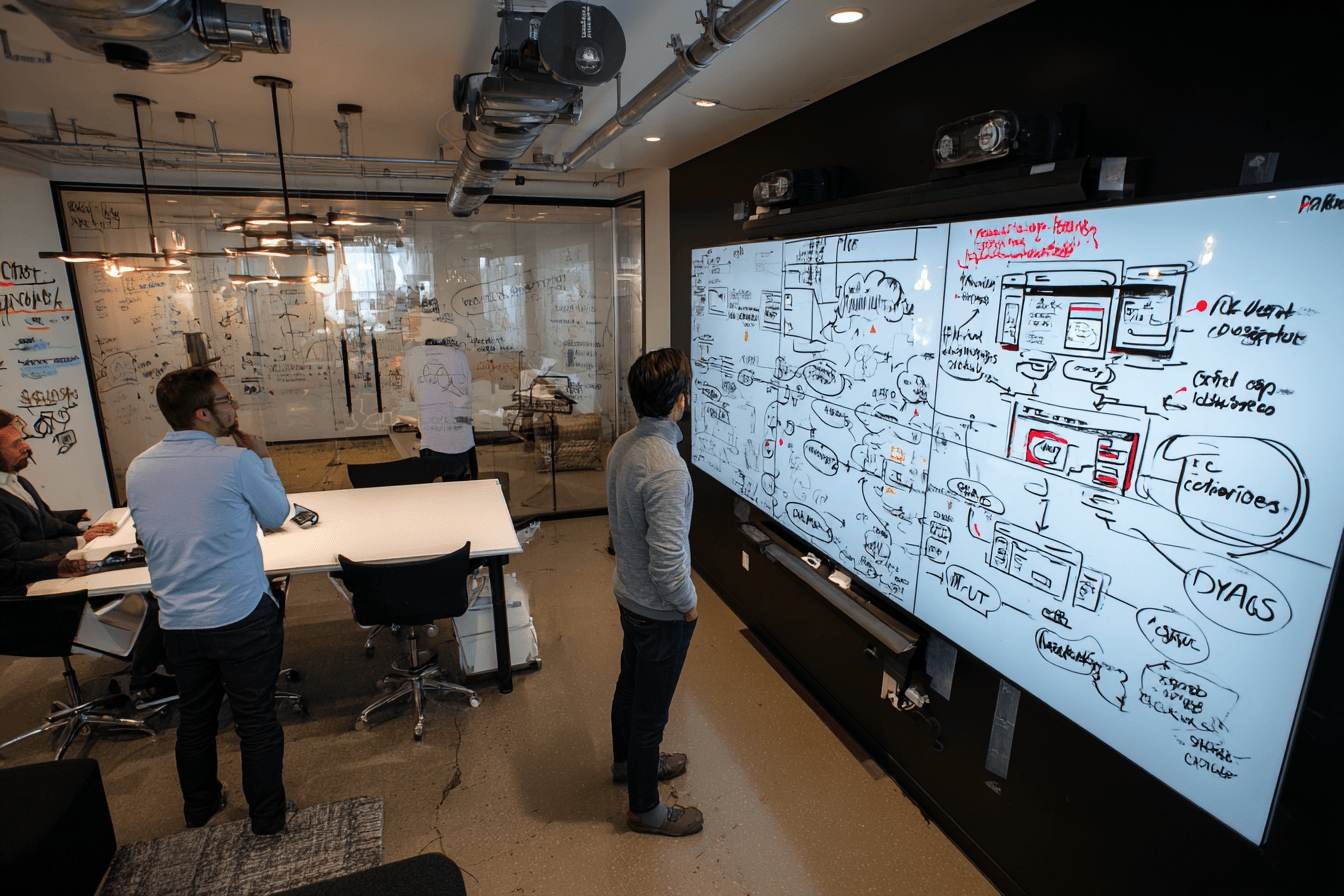AI Search Optimization for SaaS: Complete 2025 Playbook
1. Introduction and Overview
In today’s digital landscape, SaaS companies face unprecedented competition for visibility. As of mid-2025, artificial intelligence has fundamentally transformed how search engines operate and how users interact with search results. This shift demands a new approach to search optimization that goes beyond traditional SEO tactics.
This playbook offers SaaS companies a comprehensive framework for leveraging artificial intelligence search engine optimization to improve visibility, drive qualified traffic, and ultimately convert more customers. Whether you’re a startup looking to establish market presence or an established SaaS player seeking to maintain competitive advantage, these strategies will help you navigate the AI-driven search ecosystem.
Recent data shows that SaaS companies implementing AI-optimized search strategies are seeing 37% higher conversion rates and 42% lower customer acquisition costs compared to those using conventional SEO approaches. With search engines now prioritizing user intent and contextual relevance over keyword density, it’s essential to adapt your strategy accordingly.
2. Key Concepts and Fundamentals
Understanding AI-Driven Search
Modern search engines employ sophisticated AI algorithms that focus on:
- User Intent Recognition: Identifying the true purpose behind search queries
- Contextual Understanding: Analyzing content beyond keywords to grasp meaning
- Predictive Behavior Analysis: Anticipating what information will satisfy users
- Multimodal Search Capabilities: Processing text, voice, image, and video inputs
The AI Search Landscape in 2025
The search ecosystem has evolved significantly with:
- Semantic Search: Understanding relationships between concepts
- Neural Matching: Connecting queries to content based on meaning, not just keywords
- Entity Recognition: Identifying and categorizing real-world objects, people, and concepts
- Query Reformulation: Automatically expanding or refining search queries
Why Traditional SEO Falls Short
- Traditional SEO tactics that focus primarily on:
- Keyword stuffing
- Backlink quantity over quality
- Generic content optimization
- …are now significantly less effective as AI search algorithms prioritize:
- Content depth and expertise
- User engagement metrics
- Contextual relevance
- Content freshness and accuracy
3. Step-by-Step Implementation
Phase 1: AI-Driven Keyword Intelligence
Intent Mapping:
– Categorize search intents into informational, navigational, commercial, and transactional
– Map your SaaS offering to specific user intents at each stage of the buyer journey
Semantic Keyword Clustering:
Primary Keyword → Related Concepts → Question Clusters → Intent GroupsAI Content Gap Analysis:
– Use NLP tools to identify topical coverage gaps in your content
– Analyze competitor content for comprehensiveness and depth
Phase 2: Content Optimization for AI Search
Create Topic Clusters:
– Develop pillar content around core SaaS value propositions
– Build supporting content that addresses specific user questions
Implement E-E-A-T Principles:
– Demonstrate Experience, Expertise, Authoritativeness, and Trustworthiness
– Include creator credentials and company expertise signals
Optimize for Featured Snippets:
– Structure content with clear question/answer formats
– Use schema markup to help AI understand content structure
Phase 3: Technical AI-SEO Implementation
Implement Structured Data:
– Use JSON-LD format for rich results
– Include SaaS-specific schema (pricing, features, reviews)
Optimize for Voice Search:
– Create conversational content that answers natural language queries
– Focus on question-based queries relevant to your SaaS solution
Enhance Site Architecture:
– Create logical content hierarchies
– Implement intuitive navigation patterns that aid AI crawling
4. Best Practices and Tips
Content Creation Best Practices
- Develop Comprehensive Resources: Create in-depth guides that thoroughly address user questions
- Update Regularly: Refresh content with new data, examples, and insights
- Incorporate Multimedia: Use videos, infographics, and interactive elements
- Focus on Readability: Structure content with clear headings, bullet points, and concise paragraphs
Technical Optimization Tips
- Optimize Page Speed: Aim for Core Web Vitals scores in the 90th percentile
- Ensure Mobile Optimization: Implement responsive design and mobile-first indexing
- Utilize AI-Powered Analytics: Implement tools that provide intent-based user insights
- Leverage Natural Language Generation: Use AI tools to identify content gaps and improvement opportunities
User Experience Considerations
- Personalize Search Results: Implement on-site search that adapts to user behavior
- Reduce Friction: Minimize steps between search and conversion
- Implement Chatbots: Use AI assistants to guide users to relevant content
- Track User Journey: Monitor how users navigate from search to conversion
5. Common Mistakes to Avoid
Strategy Pitfalls
- Focusing on Keywords Over Intent: Prioritizing keyword volume over addressing user needs
- Neglecting Content Depth: Creating shallow content that doesn’t fully address user questions
- Ignoring Voice Search: Failing to optimize for conversational queries
- Overlooking Mobile Experience: Not considering how content appears on mobile devices
Technical Errors
- Poor Schema Implementation: Incorrectly applying structured data markup
- Slow Page Speed: Allowing large images, scripts, or render-blocking resources
- Ignoring Core Web Vitals: Neglecting user experience metrics that impact rankings
- Missing Internal Linking: Failing to create logical content relationships
Measurement Mistakes
- Tracking Only Rankings: Focusing on position without considering CTR and conversion
- Ignoring Search Intent Metrics: Not analyzing which content satisfies user queries
- Neglecting Competitive Analysis: Failing to benchmark against industry leaders
- Overlooking AI-Specific Analytics: Not utilizing tools that provide AI-search insights
6. Advanced Strategies
Predictive Search Optimization
- Intent Forecasting: Use AI to predict emerging search trends in your SaaS category
- Content Anticipation: Create resources addressing problems users haven’t yet articulated
- Query Pattern Analysis: Identify seasonal or cyclical search behaviors
Multimodal Content Strategy
- Video Optimization: Create searchable video content with transcripts and structured data
- Audio Content: Develop podcasts and audio guides optimized for voice search
- Interactive Tools: Build calculators, assessments, or demos that address specific user intents
AI-Driven Personalization
- Dynamic Content Serving: Adjust content based on user behavior and intent signals
- Personalized Search Results: Customize on-site search based on user profile
- Intent-Based Landing Pages: Create dynamic pages that adapt to referral source
7. Conclusion and Next Steps
Artificial intelligence search engine optimization represents a paradigm shift for SaaS companies. By focusing on user intent, comprehensive content, and technical excellence, your organization can achieve sustainable search visibility in an AI-dominated landscape.
Immediate Action Items:
- Conduct an AI-SEO Audit: Assess your current content against AI search principles
- Develop Intent Maps: Create comprehensive user intent documents for your core offerings
- Implement Structured Data: Add schema markup to your key landing pages
- Create Content Clusters: Develop pillar content around your primary value propositions
- Monitor AI-Specific Metrics: Track featured snippets, voice search performance, and intent satisfaction
By implementing these strategies, your SaaS company will be well-positioned to thrive in the evolving search landscape, driving more qualified traffic and converting more customers through intelligent optimization for AI search algorithms.
Remember that artificial intelligence search engine optimization is not a one-time effort but an ongoing process of adaptation, learning, and refinement. Stay current with AI developments, continuously test new approaches, and maintain a relentless focus on addressing user needs through your search optimization strategy.






